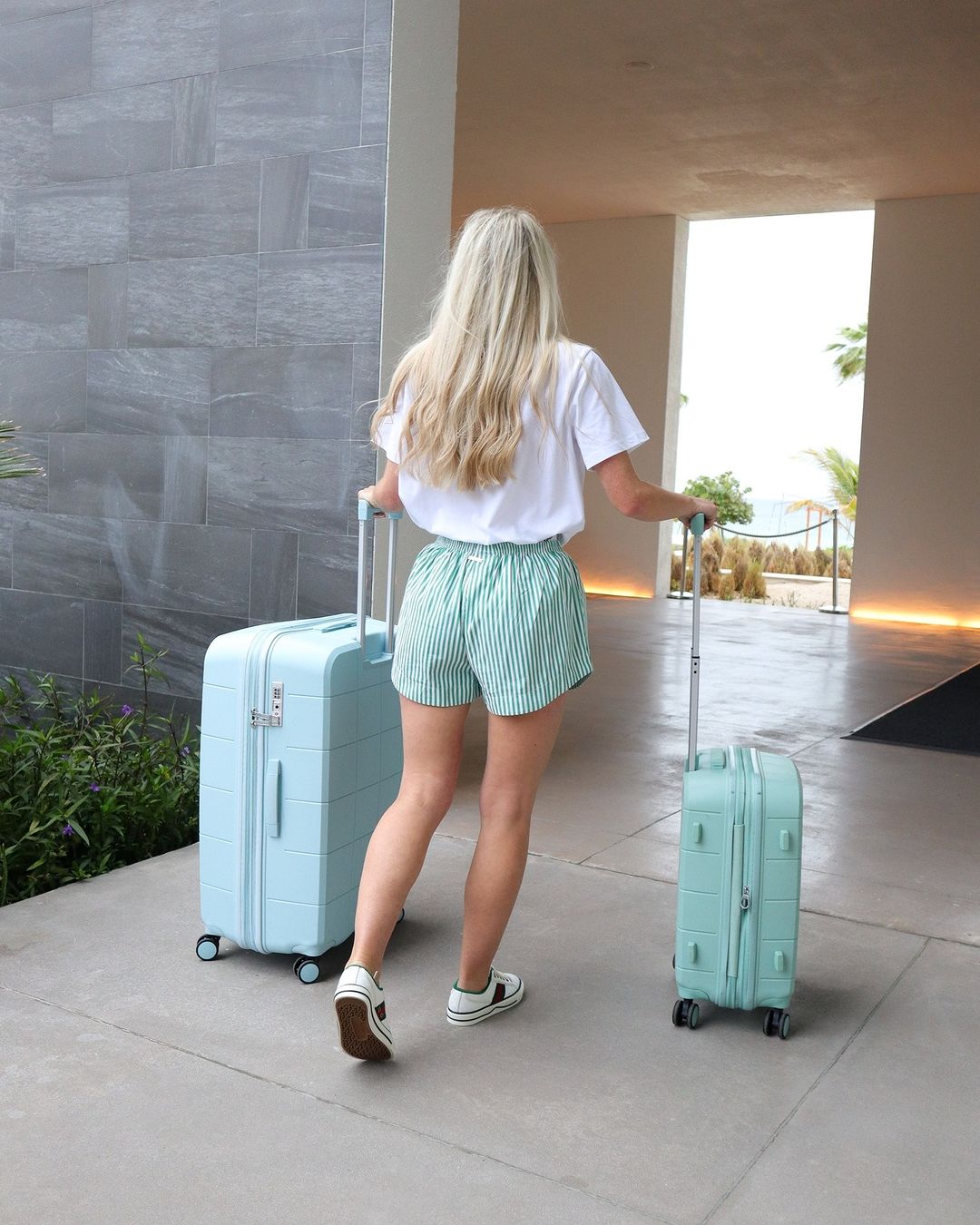
How to Choose the Right Luggage Size for Different Airlines
, by Wali Ullah Raza, 7 min reading time

, by Wali Ullah Raza, 7 min reading time
Don’t get caught out at the airport. Learn how to choose the perfect luggage size for any airline—carry-on, checked, or personal item—with this smart travel guide.
Ever had to shuffle things around at the check-in desk because your suitcase didn’t make the cut? You’re not alone. Choosing the right luggage size for different airlines can be confusing—but it doesn’t have to be. With airlines constantly updating their baggage rules, knowing what size you’re allowed to bring can save you time, stress, and those annoying last-minute fees.
In this guide, we’ll walk you through everything you need to know—from carry-ons and checked bags to airline-specific quirks—so you can travel smart and stress-free.

First things first: not all luggage is created equal. Most airlines categorise baggage into three types:
Personal item: Think handbags, laptop bags, or small backpacks.
Carry-on: Small suitcases or weekend bags that fit in overhead compartments.
Checked luggage: Larger suitcases that go in the aircraft hold.
Carry-ons typically max out around 55 x 40 x 20 cm, while personal items are even smaller. Checked bags can vary a lot more, but most airlines stick to a total linear dimension limit of 158 cm (length + width + height).
This is where things can get a bit tricky. Airlines don’t all follow the same size rules. British Airways, for example, allows a generous 56 x 45 x 25 cm for carry-ons, but Ryanair limits it to 40 x 20 x 25 cm for non-priority customers (yes, really).
Before you pack, check the airline’s website for their most up-to-date baggage allowance. It only takes a minute and can save you a lot of grief at the gate.

You might be surprised to find that what works for international flights might not fly domestically. International routes often allow for more generous luggage sizes and weights—especially long-haul flights. But on short domestic hops, particularly with low-cost carriers, expect tighter restrictions.
Always double-check the baggage rules for each leg of your journey—especially if you're switching from a long-haul international flight to a short domestic connection.
Travelling with budget airlines? Get ready to pack smart. Carriers like EasyJet, Ryanair, Wizz Air, and Jet2 are notoriously strict with bag sizes—and they love to charge extra for oversized luggage.
You might only be allowed a personal item unless you’ve paid for priority boarding or an upgraded fare. Investing in an airline-approved underseat bag can be a game-changer if you fly budget regularly.
Got a layover? Then you’ll want to plan your luggage carefully. If your journey involves multiple airlines, you’ll need to meet the strictest luggage limit across the board.
Also, consider whether your luggage is being transferred automatically or if you’ll need to collect and recheck it. This might influence whether you stick to carry-on only or check a larger bag.

Many travellers forget this one. When airlines state dimensions, they usually include wheels, handles, and side pockets. So don’t just measure the main compartment—those extra bits count.
Always measure your suitcase from the furthest edge of the wheels to the tip of the handle. And remember, even if your bag looks small, it might still exceed limits once you include all the extra bits.
Expandable suitcases are brilliant—until they aren’t. That extra zip can tempt you to overpack, pushing your bag beyond allowed limits.
If you're flying with a strict airline, avoid expanding your case, or pack so that even expanded, it stays within size limits. Some airport staff will make you fit your bag into a metal sizer before boarding—if it doesn't go in, you’ll have to check it (and pay up).

There’s a bit of a debate here. Hard-shell luggage is great for protection and usually has built-in size control (it doesn’t bulge), making it a safer bet for overhead bin restrictions. Soft-shell bags, on the other hand, can be more flexible and forgiving—but are easier to overstuff.
If you're aiming to stay within tight carry-on limits, a compact hard-shell suitcase may be your safest option.
Some luggage brands now offer “cabin approved” or “airline approved” labels. These bags are specifically designed to fit the requirements of most major airlines. Some even tailor models for specific carriers.
While there’s no universal standard, these labels are a handy shortcut—just double-check the dimensions before you buy.

Weight matters just as much as size. Airlines often impose weight limits (typically 7-10kg for carry-ons, 20-23kg for checked bags). A heavy suitcase eats into your limit, meaning less room for your clothes and essentials.
Look for ultra-light luggage if you’re a frequent flyer. Some cabin-size bags now weigh under 2kg, giving you more wiggle room for packing.
Airline policies can and do change—often with little warning. Whether it’s a new baggage size rule or a change in allowance tiers, keeping up with the fine print is key.
If you’re booking months in advance, set a reminder to recheck your airline’s policy closer to your travel date.
Most airlines now have handy apps where you can access your booking, boarding pass, and—crucially—your baggage allowance. Some even include bag sizers using your phone’s camera.
Keep the app installed until your trip ends, and take screenshots of the allowance page as proof in case you’re ever questioned at the airport.
Choosing the right luggage size for different airlines doesn’t have to be a guessing game. With a bit of planning and the right gear, you can breeze through check-in and avoid those last-minute repacking dramas.
Stick to airline guidelines, measure carefully, and keep it light. Your travel self will thank you later.

ON YOUR ORDER WHEN YOU SIGN UP FOR EMAIL